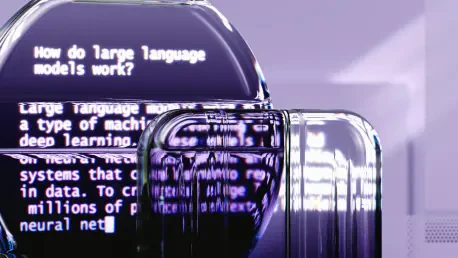What if the immense power of AI supercomputing could sit right on your desk, accessible to anyone with a vision for innovation, breaking the barriers that once limited such technology to exclusive data centers? This isn’t a distant dream but a reality unveiled by NVIDIA with the launch of the DGX Spark, dubbed the world’s smallest AI supercomputer. This groundbreaking device, introduced on October 13, promises to shatter barriers in AI development, bringing high-performance computing into the hands of individual developers and small teams across the globe.
Why This Tiny Titan Matters
The significance of the DGX Spark cannot be overstated in an industry where access to cutting-edge technology often dictates who can innovate and who cannot. For years, AI development has been tied to costly cloud services or sprawling server farms, creating a divide between large corporations and smaller entities. This desktop-sized marvel challenges that status quo, offering a solution that empowers a wider range of creators to experiment, build, and deploy AI models without prohibitive costs.
Beyond just accessibility, the device signals a shift in how technology can democratize progress. By placing such power directly on a desk, NVIDIA is not merely selling hardware but fostering an ecosystem where startups, academics, and independent researchers can compete on a more level playing field. This move could spark a wave of innovation, potentially transforming industries from healthcare to entertainment with fresh perspectives.
Breaking Down Barriers in a Cloud-Heavy Era
In today’s tech landscape, reliance on cloud infrastructure for AI workloads often means high expenses and limited control over data. Many developers face the challenge of balancing budgets while seeking the computational power needed for complex projects. The DGX Spark addresses this pain point head-on, providing a local alternative that reduces dependency on remote servers and offers a cost-effective path to high-performance computing.
This shift toward localized AI power aligns with a broader industry trend of making technology more inclusive. By enabling direct access to robust tools, NVIDIA is helping to bridge the gap for those who lack the resources for extensive cloud subscriptions. The impact could be profound, especially in regions or sectors where financial constraints have historically stifled technological advancement.
The Power Packed Inside This Compact Machine
At the heart of the DGX Spark lies NVIDIA’s Grace Blackwell architecture, a sophisticated blend of GPUs, CPUs, networking, and CUDA libraries designed for maximum efficiency. With a petaflop of AI performance and 128GB of unified memory, this system transforms any workspace into a high-performance hub capable of handling demanding tasks. It can run inference on models with up to 200 billion parameters and fine-tune models of up to 70 billion parameters—all locally.
The implications of such capabilities are vast, touching various fields eager to harness AI. Early adopters, including tech giants like Google and Microsoft, alongside academic institutions such as NYU Global Frontier Lab, are already testing its potential in diverse applications. From accelerating drug discovery to enhancing creative software, the device’s technical prowess positions it as a versatile tool for innovation across multiple domains.
Partnerships with leading brands like Acer, Dell Technologies, and Lenovo further amplify its reach. These collaborations ensure that the system is available through major retailers and NVIDIA’s global channel partners, making it easier than ever for developers worldwide to integrate this technology into their workflows. Such widespread availability underscores the device’s role as a catalyst for change in the AI landscape.
NVIDIA’s Vision and Industry Echoes
Jensen Huang, NVIDIA’s CEO, frames the DGX Spark as a milestone in a journey that began with the pioneering DGX-1 nearly a decade ago. “This system puts the power of supercomputing directly into developers’ hands to ignite the next wave of AI breakthroughs,” Huang remarked, highlighting a commitment to continuous advancement. His words reflect a deep-rooted belief in empowering creators with tools that drive progress.
The industry shares this enthusiasm, with organizations like Anaconda and Meta actively exploring the system’s capabilities in varied settings. Their involvement signals a collective recognition of the potential for compact, powerful hardware to redefine AI development. This widespread support validates NVIDIA’s direction, suggesting that the DGX Spark could become a cornerstone in the evolution of accessible technology over the coming years, from 2025 to 2027 and beyond.
How Developers Can Dive Into This Game-Changer
For those eager to leverage the world’s smallest AI supercomputer, getting started is straightforward and accessible. The DGX Spark is available for order through NVIDIA’s official website and partner channels, catering to a global audience of developers, researchers, and innovators. This ease of access ensures that anyone with an interest in AI can bring this technology into their workspace without unnecessary hurdles.
Setting up the system requires minimal preparation, though checking power and connectivity specifications on NVIDIA’s site is recommended to ensure compatibility. Developers can also tap into a wealth of resources, including tutorials and support from the NVIDIA developer community, to optimize tasks like model inference and fine-tuning. Starting with smaller projects allows users to familiarize themselves with the system’s capabilities, whether they are in academia, a startup, or working independently on cutting-edge solutions.
Reflecting on a Bold Step Forward
Looking back, the unveiling of the DGX Spark marked a defining moment in the quest to make AI computing accessible to all. It stood as a testament to NVIDIA’s dedication to breaking down technological barriers, supported by a network of industry leaders who saw its transformative potential. The device’s launch was not just about hardware but about opening doors for countless innovators who previously faced insurmountable obstacles.
For the future, the path forward involves embracing this technology through practical steps—acquiring the system, integrating it into workflows, and exploring its vast applications. As more developers and organizations adopt this compact powerhouse, the collective push toward groundbreaking AI solutions gains momentum. The challenge then is to keep experimenting, collaborating, and building on this foundation to shape a more inclusive and innovative technological landscape.









